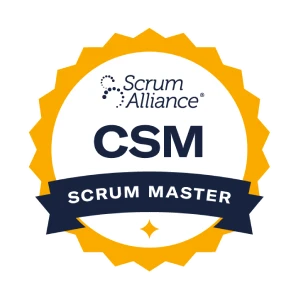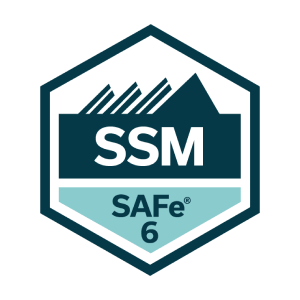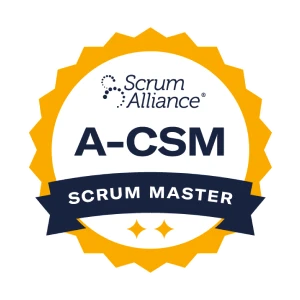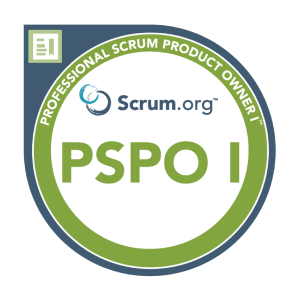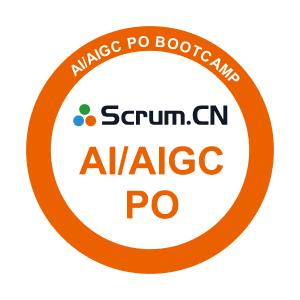一 为什么需要大规模敏捷?如何说服组织高层进行大规模敏捷改进
问题1:Dean通过什么方式去说服公司的top management?
一定要从SAFe能带来什么好处开始。SAFe的好处包括更快的上市时间、更高的质量和生产力,以及更高的员工敬业度。每个负责任的管理者都希望得到这些好处。
(参见https://www.scaledagileframework.com/safe-for-lean-enterprises/)
管理层在业务运营中经常面临各种挑战,如上市时间太慢、质量不佳、竞争加剧等。大多数企业及其管理层清楚这些挑战,但却不明白其背后的原因。正如Kersten和Kotter在他们的著作中所指出的那样,其中许多(即使不是大多数)挑战都与企业仍在使用过时的管理方法来运营企业以及向客户开发和交付价值相关。
在当今竞争激烈的环境中,许多企业仍然继续采用层级结构,在职能筒仓中运营业务,并通过瀑布方法和项目来执行价值交付。为了让企业能够在未来持续赢得竞争,不能再继续这样了。我们需要一种不同的解决方案,使企业能打造一个聚焦于客户、质量和快速交付的新体系,同时持续运营和保持稳定。用Kotter的话来说,这是一种双运营系统,而在整个企业中应用SAFe就是实现这一目标的解决方案。
说服管理层采用SAFe的关键是,让他们理解SAFe的好处,让他们理解SAFe将会如何帮助企业建立起一种全新的工作模式,这种工作模式能够令组织齐心协力地向客户交付价值,能够令企业变得更加快捷和具有更强的适应性能力,能够令企业产生更高的质量,能够将企业转变成一个能生存于数字和软件时代的组织。
问题2:有没有一些好的实践能帮助高层理解业务敏捷?
这就是我们打造Leading SAFe课程的原因。Leading SAFe课程旨在帮助领导们理解和应用新的工作方式,以实现真正的业务敏捷。
(参见https://www.scaledagile.com/certification/courses/leading-safe/)
业务敏捷,通过以创新的业务解决方案来快速响应市场变化和浮现机会,以使企业能够在数字时代赢得竞争并蓬勃发展。业务敏捷要求参与解决方案交付的每一个人——业务和技术领导、开发、IT运营、法律、营销、财务、市场支持、合规、安全等等——都采用精益和敏捷实践,以超越竞争对手的速度来持续交付创新的高质量产品和服务。
问题3:有些企业已经采用了SAFe完成了1-2年的转型了,但是企业高层仍然会问一个问题,接下去SAFe在哪些方面能够帮到我们?例如,我们已经做到了多个ART,做到了提升效能。那么从业务敏捷上,我们还可以有哪些理论和实践可以从SAFe中获取呢?
业务敏捷是一个过程,而不是一个终点。你永远不会精益过度或敏捷过度。业务上带来的好处再多也不为过。我会通过查看业务敏捷评估结果来了解企业七大核心能力的状况,以确定有哪些改进机会:
(参见https://www.scaledagileframework.com/measure-and-grow/)
持续改进是SAFe的固有内容,要坚持不懈地坚持改进。
问题4:SAFe实践中除了高层外,还有哪些核心部门必须被“洗脑”才能顺利推动?
再说一遍,一定要从SAFe能带来什么好处开始。SAFe的好处包括更快的上市时间,更高的质量和生产力,以及更高的员工敬业度。
(参见https://www.scaledagileframework.com/safe-for-lean-enterprises/)
我们需要的不是对领导进行“洗脑”,我们需要的是对领导进行新工作方式的教育,这样他们才能带领组织走上业务敏捷之路。
随着企业走向更直接的“价值导向”交付模型(通过“双运营系统”实现),现有层级式组织结构的许多部门都将受到影响。例如,人力资源、项目管理办公室、财务等,这些职能中的细分业务运营单位将会受影响,因为他们的“项目”和“项目”中的工作人员将会被转换为以SAFe这种新型方式进行工作。当他们开始看到新工作方式的好处时,这些核心职能部门的思维模式也将会随之改变。
问题5:双重操作系统主要适应业务和复杂层次的组织结构之间的连接,是不是代表在一些简化和灵活结构的组织中,不需要SAFe?
当需要通过采用精益和敏捷方法来提高质量和生产力时,组织就会需要SAFe。双运营系统能帮助组织从职能筒仓、瀑布和项目的传统执行模式转换到一种全新的、面向价值的、基于价值交付网络的执行模式,这种模式旨在提高交付速度和质量。SAFe是运营模式的蓝图。
当组织规模小或年轻时,他们往往已经有了一个更加价值导向的网络结构和执行模式。然而,随着他们的成长,他们将倾向于遵循传统的组织增长模式,发展出更深的层级结构,更集中的职能筒仓,年度预算模式,以及基于瀑布和项目的执行模式。现在,通过理解SAFe,随着增长的发生,您开始能确保自己将组织中保持稳定和职能所需的部分与为客户创造价值交付所需的部分分开。
问题6:SAFe强调整体的生态系统,需要自上而下的推动。但是Dean也强调变化需要由点及面的铺开去影响决策层的领导,这两点是否有矛盾呢?SAFe是具有一定规模的框架,如何能由点及面的逐步推动?
虽然可以自上而下或自下而上地单向执行,但现实是必须两者兼有之。我们需要行政领导领导变革,需要他们采用成长思维和展示精益/敏捷的价值观和原则,以开始推动变革。随着在业务单元和投资组合中开始实施,在一个激励人们主动参与而非被迫加入的变革愿景的预期下,中层管理者也开始参与进来。
二 如何实施大规模敏捷
问题7:业务层面敏捷和组织层面敏捷,在SAFe里面怎么衔接,分别怎么转型?
业务级敏捷是企业更广泛的目标。SAFe指出,实现这一目标需要企业掌握七个核心能力。
(参见https://www.scaledagileframework.com/business-agility/)
组织敏捷力就是这些核心能力之一。
(参见https://www.scaledagileframework.com/organizational-agility/)
它关注的是构成敏捷基础的重要事物:具有精益思维的敏捷人员和敏捷团队,精益业务运营和战略敏捷力。
问题8:刚刚提到价值网络和层级组织,SAFe将两者融合起来,怎么来进行的融合呢,或者说能否介绍下SAFe在这个方面的一个最佳实例的样子?
许多组织正在发觉,在软件和数字化时代难以赢得竞争,是因为他们仍然在使用传统的管理结构和方法——例如层级结构、项目和瀑布——来交付客户价值,而这些已经不再有效。SAFe引入了业务敏捷的概念,以应对这一情况。为了解决这一问题,在为了保持稳定而基本保留层级结构的同时,SAFe被定位为价值交付网络的第二运营系统,专注于客户价值和快速交付。
因此,它真地不是对两者进行简单地集成,而是重新设计组织,以分离出为客户交付价值所需要的关注点,以及为维护日常运营所需的稳定性和汇报结构。
参见:https://www.scaledagile.com/customer-stories/?_ga=2.138063664.164700457.1607493292-1229239719.1579655828
问题9:实施大规模敏捷的企业工程方面(流程,技术,工具平台)如何适配敏捷?有没有推荐的实践?
SAFe提供了一种截然不同的组织和执行的工作方式。它无疑会影响现有的过程和工具,但并不存在普遍适用的模式。
相反,随着技术和业务领导开始理解采用SAFe是多么需要聚焦于业务和技术的协同工作时,他们将会引领组织走向新的组织和工作方式。再说一遍,教育是关键!当领导和团队看到业务上的好处并领导变革时,他们就能对需要保留、删除和新增哪些工具和流程做出正确的决策。
问题10:有没有一些好的实践去推进数据类团队(数据中台、大数据、数据治理)的敏捷转型?
从SAFe的原则和实践角度来看,“大数据”和“大应用”并没有什么不同。像所有的投资组合一样,数据管理将由一个或多个价值流完成,这些价值流由某种形式的请求触发,并最终向其客户交付价值,无论这些客户来自内部还是外部。
这样一来,就会出现一个采用SAFe来支持数据管理价值流的技术投资组合。这个技术投资组合也会建立开发价值流和ART团队,以支持其运营价值流。所有团队都将目标一致地致力于数据管理,所有与数据治理、大数据等相关的行动方案都将由这些开发价值流和ART团队来实施。
问题11:Hi,Dean。一直有个困惑,一家使用传统waterfall项目管理的公司,可以直接实践规模化敏捷吗?还是需要从小规模敏捷开始?
经验表明,仅仅在团队层面采用敏捷,并不能为企业带来全面精益和敏捷工作方式的所有好处。它并没有解决企业中阻碍其实现业务敏捷的系统性问题。仅仅采用小规模敏捷,企业仍然在项目中执行价值交付,团队仍然是临时的,价值仍然仅限于项目范围,预算也仍然是基于项目进行的,等等。
当SAFe被采用后,它能打造了一种价值交付的执行模式,这种模式围绕着向客户交付价值的完整价值流来进行组织。ART团队和预算也都致力于此。我们会对所有人员进行培训,同时启动,然后提供持续的教育和指导。这是一种在整个企业中工作的常见方式。
通过团队回顾和检视适应(I&A)使持续改进得到落地,这能确保问题和争议得到持续的处理和解决,从而实现持续的改进。采用这种方式,业务敏捷而非团队敏捷,就会成为企业的核心运营模式,而不再仅仅是团队和项目的改进。
三 敏捷合同与供应商管理
问题12:敏捷合同的实践有什么发展动态?敏捷合同如何推动业务敏捷的开展?
敏捷合同增加了双方的灵活性,并对直接影响业务敏捷。
(参见https://www.scaledagileframework.com/agile-contracts/)
传统合同建立于对需求、设计、人量和时间量的错误完备假设之上。这些合同往往导致参与各方从一开始就存在分歧。敏捷合同有助于让双方以一种更具协作和相互协调的工作策略来参与,是一种基于相互信任、一致认可和持续客观进度依据之上的工作方法。
问题13:如何使用敏捷合同的方式竞标?
请参见https://www.scaledagileframework.com/agile-contracts/。
在没有更多背景信息的情况下回答这个问题有点困难,我假设您是一个从客户那里竞标开发工作的承包商。这在很大程度上取决于客户如何定位其招标要求或RFP。如果客户按传统方式提出要求,则招标将基于假设的工作范围和时间框架进行。供应商被期望提供固定成本。这种情况下,要实现真正的敏捷合同,为时已晚。但供应商仍然可以相应地提出通过增量交付和以客观里程碑来触发付款的策略。这会带来额外的敏捷性。
如果客户处于另一种极端情况——正在采用敏捷或已成熟应用敏捷,那么他们的招标要求将是不同。招标会询问您的敏捷方法,您将如何与他们合作,等等。你可以将其作为敏捷合同来进行竞标,这个敏捷合同将基于协作、逐步度量产出、敏捷绩效以及您和他们双方的信任程度等等。
如今,许多传统合同都倾向于在客户和供应商之间建立交易关系。供应商的目标是围绕使用SAFe敏捷方法来实施交付的能力,建立一种更具战略性和基于价值的关系。
问题14:在汽车行业,有没有看到SAFe在整车厂和供应商之间合作的best practices? 反过来,如果只有供应商跑SAFe,而整车厂还是用传统方式,有何建议?
在汽车行业,无论是沃尔沃(Volvo)这样的汽车制造商,还是博世(Bosch)、埃塔斯(ETAs)、大陆集团(Continental Group)这样的供应商,都在采用SAFe。
一般来说,制造商和供应商都能受益,因为他们可以更好地应对变化。他们可以快速调整功能和特性,按需要划分和调整优先级,并按需交付。
四 组织与团队
问题15:SAFe有哪些关于转型人事部门的想法?
SAFe会影响人力资源部门本身,并进而使其在企业中发挥更大作用。对于人力资源部门,他们将受益于采用敏捷作为团队工作方式,受益于应用精益-敏捷思维和实践来改善他们的生产力和流动速度。
但更大的影响是,SAFe转型会如何影响到企业中的人员。这需要采用新的思维来考虑薪水和福利、招聘方法、绩效评估实践等等。随着SAFe被采纳以及更多的人员受影响,人事/人员管理会需要加深对SAFe和企业转型的理解,这将帮助发展人力资源实践,并引领组织走向真正的业务敏捷。
可以访问以下网页了解更多信息:
https://www.scaledagileframework.com/guidance-an-hr-playbook-for-a-successful-SAFe-implementation/
https://www.scaledagileframework.com/agile-hr/
https://www.youtube.com/watch?v=XBWtOpYnQ-s
问题16:屁股决定脑袋,敏捷化经常发现很多需求其实没有被“敏捷”的完成。很多情况下PO/PM根据自己当前的KPI进行分配和决定,所以业务和需求方依然觉得很隔离,说白了自己的问题无法解决,想法无法实现。如何做好这类痛点的平衡和管理?
在实施SAFe的过程中,企业需要从不同角度来思考如何组织、开发和交付价值给客户。当前企业的价值交付方法是,通过职能筒仓、项目和瀑布方式来完成。这对那些价值交付工作造成了限制,人们工作所处的职能筒仓会阻碍协作,项目的范围和约束限制了对变化的响应,要竭力达成的KPI通常也是针对个人绩效或个人产出的,而非针对价值交付产出的。
相反,SAFe帮助团队围绕企业向客户价值交付来进行组织。区别于项目和瀑布方法的执行方式,SAFe组建了一个由一组专职敏捷团队组成的敏捷团队,称为敏捷发布火车(ART),并作为一个持续交付流水线来执行。这意味着担任Business Owner、Product Manager和Product Owners角色的这些人会更直接地向解决客户问题或需求的客户解决方案保持一致。我们不以KPI来度量个人或“职能筒仓”,我们度量的是业务产出,例如发布频率、发布的特性数量、客户和业务的满意度(通过NPS分数),以及提高的质量,等等。
问题17:请问对某行业生态各组成组织的敏捷文化传播有哪些维度可以考虑?假设以通用汽车为例,在其生态供应商组织中如何进行文化传播?
文化对于任何组织都是微妙的,您无法直接改变它。文化只能通过应用新的工作方式并不断强化、使之能长期固化和成为本能而改变。这样,它们才能成为企业的习惯。
要在任何组织中发起文化变革,您首先需要从组织面临的问题中找出挑战,然后将这些挑战与当前的工作方式联系起来,将其作为根本原因。然后,随着时间的推移,在新的价值观和原则的基础上,引入精益-敏捷实践,改变了工作方式,直到它成为一种习惯。
客户想要提升其供应商使用敏捷方法进行交付的能力,这种情况同样也需要进行文化变革。通过展示新的工作方式,他们能看到引发组织变革可能带来的好处。
问题18:SAFe团队的敏捷教练与SCRUM团队的敏捷教练,所需技能和职责上有哪些相同和不同点?
请参见 https://www.scaledagileframework.com/agile-teams/
SAFe中的敏捷团队通常会应用Scrum,但他们拥有额外的技能和经验,以便在复杂的多团队企业环境下管理工作和齐心协力地交付价值。SAFe的敏捷团队除了会执行同样的Scrum活动外,还会参与管理ART的跨团队活动,如PI计划、系统演示、I&A等。他们还会应用看板来可视化和监控工作的流动。
此外,他们还具有持续集成和测试、BDD和TDD、DevOps和部署,以及团队间依赖关系管理等方面的技能。
五 SAFe的本地化发展规划
问题19:SAI接下来3年在中国的发展规划 以及对中国市场的展望如何?
Scaled Agile将中国视为最大的潜在增长市场之一,我们已经开始投资这个市场。我们在市场上找到更多的重要合作伙伴,这些合作伙伴拥有足够的技能来支持企业加速SAFe转型。在中国,已经有数千名训练有素的SAFe从业者和数百名SPC,其中许多人正在与全球其他国家的同行一起使用SAFe。我们已经开始在人员和流程方面进行本地化的投资,以推进关键领域的进展。并且,从中国大型企业以及大型跨国企业应用SAFe来加速其业务敏捷的进程,我们能感受到强烈的意愿。在未来的三年里,我们预期继续投资于合作伙伴和我们自己的团队,以及为中国的快速增长提供所需资源。
问题20:SAFe中文版、以及相关资料中文版何时能同步? SAFe在中国的市场宣传,全面汉化以及本地案例的推广有何计划?
到目前为止,SAFe已经在110多个国家和地区得到了应用。随着越来越多的用户分布于不同国家,SAFe在非英语国家的本地化也变得越来越迫切和重要。SAFe知识体系的本地化已经成为SAI的一项重要战略。
与此同时,中国市场的重要性和SAFe的本地化也已被提上了日程。我们有一个专门的本地化团队,并聘请了经验丰富的多语言翻译人员。他们将负责实现每个国家的本地化需求,这是一个迭代/增量过程。我们从MVP开始,建立了本地化流程,并根据市场和客户的需求不断调整流程和交付成果。例如,先从考试开始,然后是学生手册、课堂讲义、营销材料、客户支持、网站等等。在实施过程中,我们也使用了SAFe自身的PI机制。这样,每8-12周我们就能看到一些客户价值的发布。与此同时,我们也会获取市场分析的反馈信息,并在接下来的PI中及时调整本地化的计划和产物。我相信您今年已经收到了很多中文邮件。同时,最近您也应该收到SAI已经提供中文客户支持邮件的信息,这有助于我们获取反馈并持续改进。因此,请尽可能关注SAI向社区发送的电子邮件。如果有任何意见和建议,您可以用自己的习惯语言进行回复。您的积极反馈和建议是帮助我们持续改进的重要渠道。
在2020年,SAI已经对我们的全球化能力进行了投资。我们已经选择了要聚焦的关键语言和市场(中文是首选),我们已经更新了我们的SAFe词汇表,我们已经开始将《SAFe精华》这本书翻译成中文,我们现在正在翻译几个关键的课程考试。我们还会为本地化市场建立了第一个中文网站,并与Cerno合作发布首个中文案例研究。
我们将采取增量方式来本地化其他重要的SAFe资料。我们已经在收集客户和合作伙伴关于优先考虑哪些课程、哪些营销材料及重要物品(如视频、工具包等)的意见。我们打算每个PI,基于工作量和市场影响,以一种有规律的节奏在中国发布新事物,逐步增加对客户的价值。
我们欢迎大家分享自己的SAFe成功故事,这样我们就可以一起来整理重要的案例文档,并与社区中的其他人分享。
感谢以下人员对本篇文章的翻译整理:
问题收集及整理:Marsha Xue
文章翻译:Jerry Li
原英文文献:
1.How do you convince the top management team to adopt/accept SAFe?
Answer – Always start with the Why. The benefits of SAFe include faster time to market, higher quality and productivity, and higher levels of employee engagement. (see https://www.scaledagileframework.com/safe-for-lean-enterprises/) Every responsible manager wants that.
Management is often faced by challenges in business operation, such as slow time to market, poor quality, increased competition, etc. Most enterprises and their management understand these challenges but are not aware of their causes. As both Kersten and Kotter have identified in their books many if not most of these challenges are related to enterprises that continue to apply outdated management approaches the enterprise operations and the development and delivery of value to their customers.
In today’s hyper-competitive environment many enterprises continue to structure in hierarchies, operate in silos, and execute value delivery via the waterfall method and projects. These are no longer sustainable for future success. We need a different solution that allows for the continued operation and stability of the enterprise, while creating a new part of the enterprise that is focused on the customer, quality, and the speed of delivery. In Kotter’s words this is the Dual Operation System and applying SAFe throughout the enterprise is the blueprint for that.
The key to management’s adoption of SAFe is understanding the benefits how SAFe will help the enterprise build a new way of working that is aligned to the value it delivers to customers, that will be faster, more adaptable, produce high quality and transform their enterprise to an enterprise built to survive in the age of digital and software.
2.There has always been a puzzle: can a company that uses traditional waterfall project management practice scale agile directly? Or do they need to start small agile?
Answer – Experience has demonstrated that adoption of agile at team levels does not lead to the full benefits of a full scale lean and agile way of working. It just does not address the systemic issues in the enterprise that prevent it from achieving Business Agility. By adopting small, the enterprise still executes in projects, teams are temporary, value is only project scope, funding is project based, etc.
When SAFe is adopted it creates an execution model that is organized around the full value streams that deliver value to customers. ARTS Teams,and funding are dedicated and aligned to that. We train everyone and launch all at once, and then support with continual education and coaching. It is one common way of working across the entire enterprise.
Relentless improvement applied through team retrospectives and the Inspect & Adapt (I&A) ensure problems and issues are continuously addressed and resolved to make continuous improvement. In this way Business Agility, not team agile, becomes the core operating model for the enterprise, not just a team and project improvement.
3.Are there any good practices to help senior managers understand business agility?
Answer – That is why we created Leading SAFe:
(https://www.scaledagile.com/certification/courses/leading-safe/) , which is designed to help leaders understand and apply the new way of working and achieve true business agility.
Business Agility allows enterprises to compete and thrive in the digital age by quickly responding to market changes and emerging opportunities with innovative business solutions. Business Agility requires that everyone involved in delivering solutions—business and technology leaders, development, IT operations, legal, marketing, finance, support, compliance, security, and others—use Lean and Agile practices to continually deliver innovative, high-quality products and services faster than the competition.”
4. What is SAI’s development plan in China in the next three years and its outlook on China’s market?
Scaled Agile considers China to be one of the largest potential growth markets, and we have already begun to invest in the market. We have added a number of important partners in the market with the skills needed to support Enterprises that wish to accelerate their SAFe transformation. There are already thousands of trained practitioners, and hundreds of SPCs in China, many who are using SAFe together with their global counterparts in other countries. We have begun investing in localization, both in people and processes to make progress in these key areas. And we see strong interest from large Chinese companies as well as large Global Corporations to use SAFe to accelerate their business agility journey here. Over the coming three years we expect to invest in Partners, our own team, and the resources needed to support a rapid growth rate in China.
5. Are there any good practices to promote the agile transformation of data teams (data center, big data, data governance)?
From the perspective of SAFe principles and practices, ‘Big Data’ isn’t any different than ‘Big Applications’. Like in all portfolios, Data Management will be addressed by one or more Value Streams, triggered by some form of request and result in delivery of value to its customers, whether they be internal or external.
Thus, a technology portfolio would adopt SAFe aligned on Value Streams related to data management. The technology portfolio would establish Development Value Streams and ARTs to support Operation Value Streams, teams would be aligned and dedicated to these. Initiatives related to data governance, big data, etc. would be enacted across those Development Value Streams and ARTs.
6. When can the Chinese version of SAFe and related materials be synchronized?Market promotion of SAFe in China, comprehensive localization and promotion plan of local cases?
So far, SAFe has been used in more than 110 countries and regions. With more and more users distributed in various countries, the localization of SAFe in non English speaking countries is becoming more and more urgent and important. The localization of the SAFe knowledge system is an important strategy of SAI.
At the same time, the importance of Chinese market and the localization of SAFe have been put on the agenda. We have a dedicated localization team and employ experienced multilingual providers. They will be responsible for implementing the localization requirements of each country, which is an iterative/incremental process. We’ve started with MVP and established the process of localization, and continuously adjust the process and deliverables based on marketing and customers’ needs. For example, start with the exam, then students’ books, classroom handouts, marketing materials, customer support, websites, etc. We also use SAFe’s own PI mechanism in the implementation process. In this way, we will see some customer value releases every 8-12 weeks. At the same time, we will get market analysis feedback, and timely adjust the plan and output of localization in the following PI. I believe that you have received a lot of Chinese emails this year. At the same time, you should also get information recently to know that SAI provides Chinese customer support emails, which helps us to get feedback and improve continuously. So please pay attention to the email sent by SAI to the community as much as possible. If you have any comments and suggestions, you can reply in the language you like. Your positive feedback and suggestions are an important channel to help us all improve continuously.
In 2020, SAI has invested in our globalization capability. We have selected key languages and markets for focus (China is a priority), we have updated our SAFe Glossary, we have begun to translate the book SAFe Distilled into Chinese, and we are now in the process of translating several key course examinations. We also produced our first Chinese language website for the local market, and published the first Chinese case study with Cerno.
We will take an incremental approach to localizing other important SAFe materials. We have been collecting customer and partner input on which courses to consider, which marketing materials to prioritize, and other important items like videos, toolkits, etc. We intend to release on a regular cadence new items in China each PI based on the effort and market impact gradually increase the value to customers.
We would welcome all of you to share your SAFe success stories, so we can together document important examples and share with others in the community.
7. In addition to the high-level, what other core departments must be brainwashed to promote SAFe practice?
Answer: Again, always start with the Why. The benefits of SAFe include faster time to market, higher quality and productivity, and higher levels of employee engagement. (see https://www.scaledagileframework.com/safe-for-lean-enterprises/) “Brainwashing’ leadership isn’t required. What is required is to educate leaders in the new way of working so they can lead the way to Business Agility.
As the enterprise moves toward a more direct value-oriented delivery model, achieved via the ‘Dual Operating System’, there will be many parts of the existing hierarchical structure that will be impacted. For example, HR, PMO, Finance, etc. and smaller business operational units in those functions will be impacted as their ‘projects’ and people working on them will be transformed in this new way of working. Mindsets in these core functions will change as they start to see the benefits of the new way of working.
8. What are saf’s ideas about transforming the personnel department?
SAFe impacts both the HR department itself and the larger function of HR in the enterprise. With respect to the HR department, they will benefit by adopting agile as a team way of working, and apply a lean – agile mindset and practices to improve their productivity and flow.
But the larger impact is how a SAFe transformation Impacts the people in the enterprise. This requires new thinking around salary and benefits, hiring practices, evaluation practices, etc. As SAFe is adopted and more people impacted, personnel / people management will need to understand more about SAFe and the enterprise’s transformation, and they will help evolve HR practices that lead to true Business Agility.
For more:
https://www.scaledagileframework.com/guidance-an-hr-playbook-for-a-successful-safe-implementation/
https://www.scaledagileframework.com/agile-hr/
https://www.youtube.com/watch?v=XBWtOpYnQ-s
9. Some enterprises have adopted safe and completed the transformation for 1-2 years. However, the top management of enterprises still ask a question: what can SAFe do for us in the future? For example, we have already achieved multiple ARTs and improved our performance. In terms of business agility, what other theories and practices can we obtain from SAFe?
Answer – Business Agility is a journey, not a destination. You can never be too lean or too agile. You can never have too many business benefits. I would look to the Business Agility assessment to see where the enterprise is on it’s journey on the seven core competencies and to identify opportunities for improvement:
See https://www.scaledagileframework.com/measure-and-grow/
Relentless improvement is built into SAFe. Improve relentlessly.
10. What is the development trend of agile contract practice? How does agile contract promote business agility?
Answer –Agile contracts increase flexibility on the part of both parties and can have a direct impact on Business Agility.
See https://www.scaledagileframework.com/agile-contracts/
Traditional contracts are built on the flawed assumption of completeness of requirements, design, number of people and time. These contracts often put the participating parties at odds with each other from the start. Agile contracts help both parties engage in a more cooperative and integrated work strategy, an approach built on mutual trust, agreement and continued and objective evidence of progress.
11. How do enterprise engineering aspects (process, technology, tool platform) of implementing large-scale agile? Are there any recommended practices?
Answer – SAFe provides a significantly different way of organizing and executing work. It will undoubtedly impact existing processes and tools. But there is no general pattern.
Instead, as technology and business leaders begin to understand how adopting SAFe will require a focus on business and technology working together, they will lead the way to new ways of organizing and working. Education is again the key. When leaders and teams see the Business Benefits and lead the transformation, they will make good decisions as to what tooling and processes they need to keep, what to eliminate, and what new ones are needed.
12. How to use agile contract to bid?
Answer – See https://www.scaledagileframework.com/agile-contracts/
This is a bit difficult to answer without more context, but I will assume you mean a contracting organization bidding for development work from a customer. A lot of this depends on how the customer positions their tender request or RFP. If the customer is making the request from a traditional standpoint the tender will be based on an assumed scope of work and timeframe. The supplier is expected to provide a fixed cost. In this case, it might be too late for a true agile contact, but the supplier can still respond with strategies for incremental delivery and objective milestones to trigger payment. That will lead to additional agility.
If the customer is at the other end of the scale, either adopting agile, or agile mature, then their tender will be different. The tender will ask about your agile approach, how you will engage with them, etc. You can bid the contract as an agile contract that is built on collaboration, progressively measuring outcomes, agile performance, and reliability both yours and theirs, etc.
Many traditional contracts today tend to create transactional relationships between customer and vendor. The goal for the vendor is to establish a more strategic value-based relationship to built around the ability to deliver using agile methods with SAFe..
13. In the automotive industry, have you seen safe’s best practices in cooperation between vehicle manufacturers and suppliers? On the other hand, if only suppliers run safe, and vehicle manufacturers still use the traditional way, what are the suggestions?
Answer – In the automotive industry both car manufacturers like Volvo, and suppliers like Bosch, ETAs, Continental Group are adopting SAFe.
In general, the manufacturer and the supplier both benefit as they can better respond to change. They can quickly adjust Capabilities and Feature, prioritize and re-prioritize as necessary and deliver as required.
14. What are the similarities and differences in skills and responsibilities required by the agile coaches of SAFe team and Scrum team?
See: https://www.scaledagileframework.com/agile-teams/
Agile Teams in SAFe typically apply scrum but have additional skills and experience to manage working in complex multi-team enterprise environments that are aligned to value delivery. SAFe Agile Teams perform all the same scrum events, but also participate in events that manage the team-of-team environment for the ART, such as PI Planning, System Demos, I&A, etc. They also apply kanban to visualize and monitor flow.
In addition, they acquire skills in continuous integration and testing, BDD and TDD, DevOPs and deployment, and management of dependencies between teams.
15. What are the dimensions of agile culture communication of each organization in an industry? How to spread culture in the eco supplier organization, if we take GM as example?
Answer – Culture is nuanced for any organization and you cannot change it directly. Culture is changed by applying new ways of working and continuing to reinforce them, so they become permanent and are done without thought; thus they become the habits of the enterprise.
To begin culture change in any organization you first need to identify the challenges in terms of the problems the organization is facing and then connect those challenges to their current way of working as the root cause. Then over time, building on the foundation of new values and principles, introducing lean-agile practices changes the way of working until it becomes second nature.
In the case where a customer wants to improve their supplier’s ability to deliver using agile methods, that will require cultural changes as well. By showing the new way of working, and they can see the benefits that might spark change in their organization.
16. Dual operating system mainly adapts to the connection between business and complex organizational structure. Does it mean that in some organizations with simplified and flexible structure, SAFe is not needed?
Answer – SAFe is only needed where the benefits in quality and productivity that come via adopting lean and agile methods are needed. The Dual Operating System helps organizations move away from the traditional execution model of silos, waterfall, and projects, to a new value-oriented network-based execution model that is designed for speed of delivery and quality. SAFe is the blueprint for the operating model.
When organizations are small or young, they tend to already have a more value-oriented network structure and execution. However, as they grow, they will tend to follow traditional organizational growth patterns, developing deeper hierarchies, more focused silos, yearly funding patterns, and execution models based on waterfall and projects. By understanding SAFe now, as growth occurs you can begin to ensure that you can separate those parts of the organization that are needed for stability and functions form those that are needed to create value delivery for your customers.
17. Just mentioned value network and hierarchical organization, SAFe will integrate the two, how to integrate, or can we introduce the best example of SAFe in this respect?
Answer – SAFe introduces the concept of business agility as a response to the fact that many organizations are finding it hard to complete in the age of software and digital due to the fact, they are still using traditional management structures and approaches, such as hierarchies, projects and waterfall, to deliver customer value that are no longer effective. To address this SAFe is positioned as a second, network operating System that is focused on the customer value and speed of delivery, while leaving the hierarchy mostly intact for stability.
So, it’s not really an integration, but rather a redesign of the organization to separate the concerns of value delivery for the customer and keeping stability and reporting structures needed for day-to-day operation.
https://www.scaledagile.com/customer-stories/?_ga=2.138063664.164700457.1607493292-1229239719.1579655828
18. Business level agility and organization level agility, how to connect and transform using SAFe?
Answer – Business level agility is the broader goal for the enterprise. SAFe indicates that achieving this requires the enterprise to master the seven core competencies.
https://www.scaledagileframework.com/business-agility/
Organizational Agility is one of those competencies.
https://www.scaledagileframework.com/organizational-agility/
It’s focus is on the important things that form the basis for having agility, Lean-thinking Agile People and Agile Teams, Lean Business Operations, and Strategy Agility.
19. SAFe emphasizes that the whole ecosystem needs to be promoted from top to bottom. As Dean also stressed that change needs to be spread from point to surface to affect the leadership of the decision-making level. Is there any contradiction between these two points? Safe is a framework with a certain scale. How can it be promoted gradually from point to surface?
Answer – While you can implement top down or bottom up, the reality is there must be a mix of both. We need executive leadership to lead the change, adopt a growth mindset and demonstrate lean / agile value and principles to begin to drive the transformation. As implementations begin within business units and portfolios, middle management becomes engaged, hopefully with a vision for change that inspires people to join the journey, rather than forces them.
20. Position determine the brain. We often find that many requirements are not fulfilled by agility. In many cases, PO / PM is allocated and decided according to their own current KPI, so the business and the demander still feel very isolated. In other words, their problems cannot be solved and their ideas cannot be realized. How to balance and manage these pain points?
Answer – In implementing SAFe the enterprise is required to think differently about how it organizes, develops, and delivers value to its customers. Where the current enterprise approach to deliver value is done through silos, projects, and waterfall methods, this limits those working to deliver the value to be bound by the silos they work in, scope and restrictions of the project, and trying to meet KPIs that are usually targeted to individual performance or outputs, not outcomes of value delivered.
Instead, SAFe helps teams organize around the value that the business delivers to its customers. Instead of projects and waterfall methods as an execution method, SAFe structures as a dedicated group of Agile team-of-teams called an Agile Release Train (ART) and executes as a Continuous Delivery Pipeline. This means that individuals filling the roles of Business Owner, Product Manager, and Product Owners are more directly aligned to solutions to the customer that address the problems or needs for their customers. We don’t measure the individuals or a silos with KPIs, we measure the business outcomes, for example frequency of releases, number of features released, customer and business satisfaction (via NPS score), and increased quality, etc.

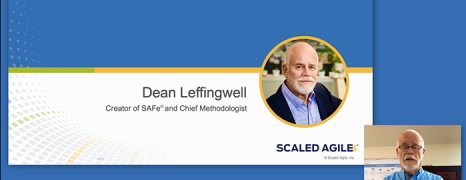


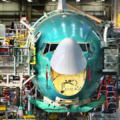
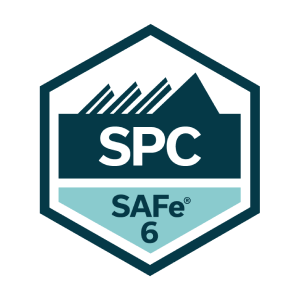
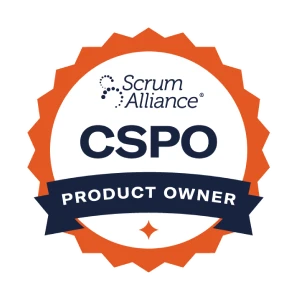
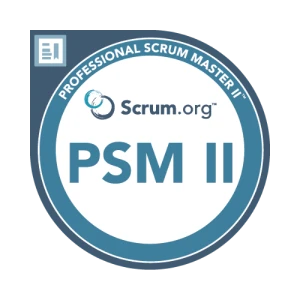
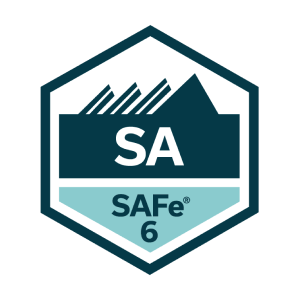
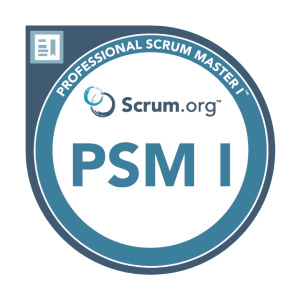
-Professional.png)
